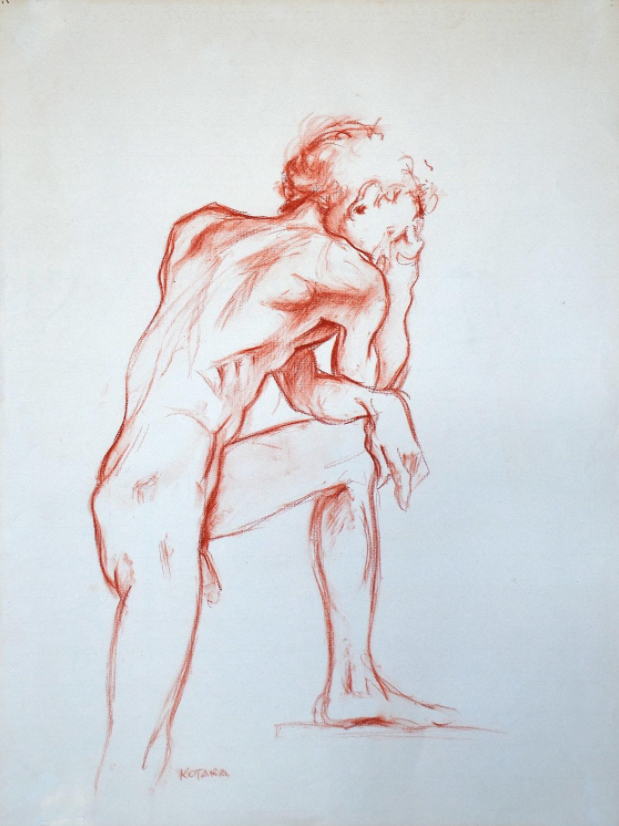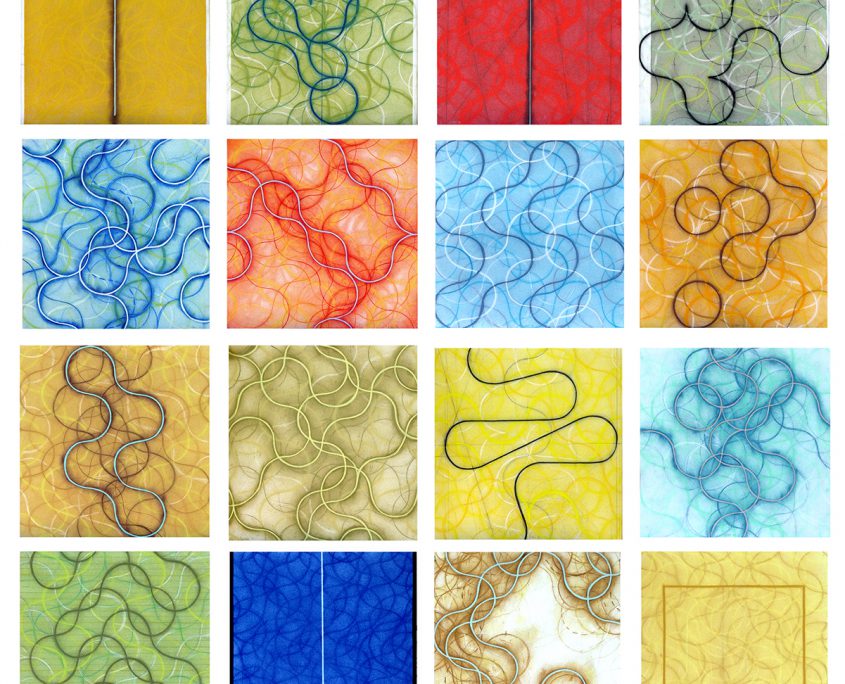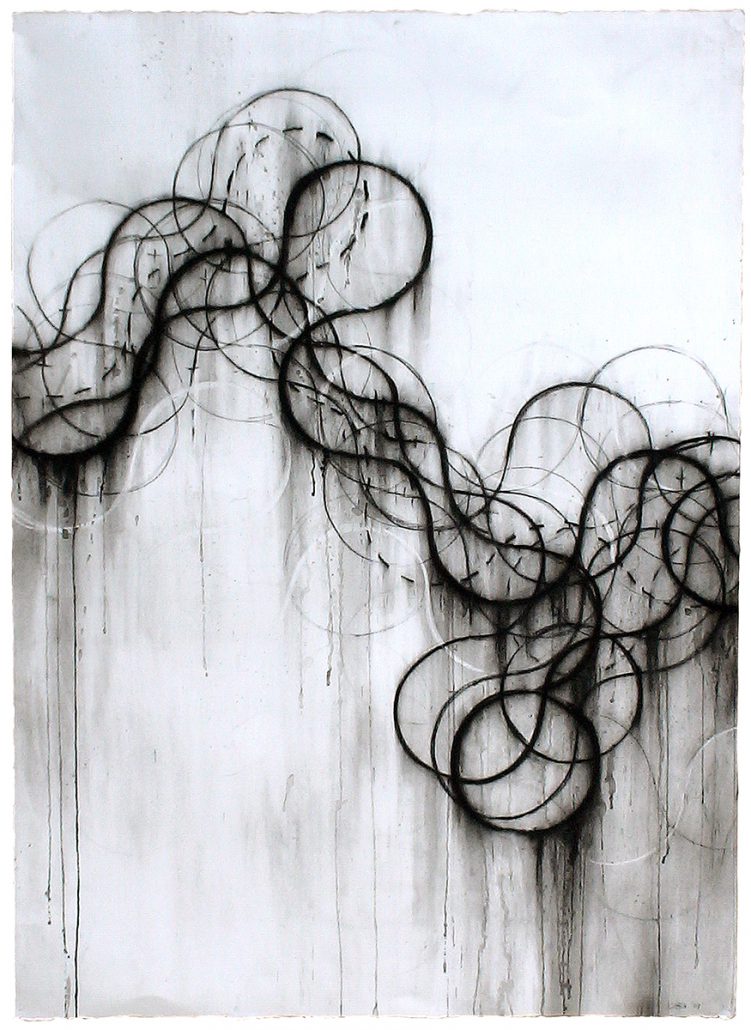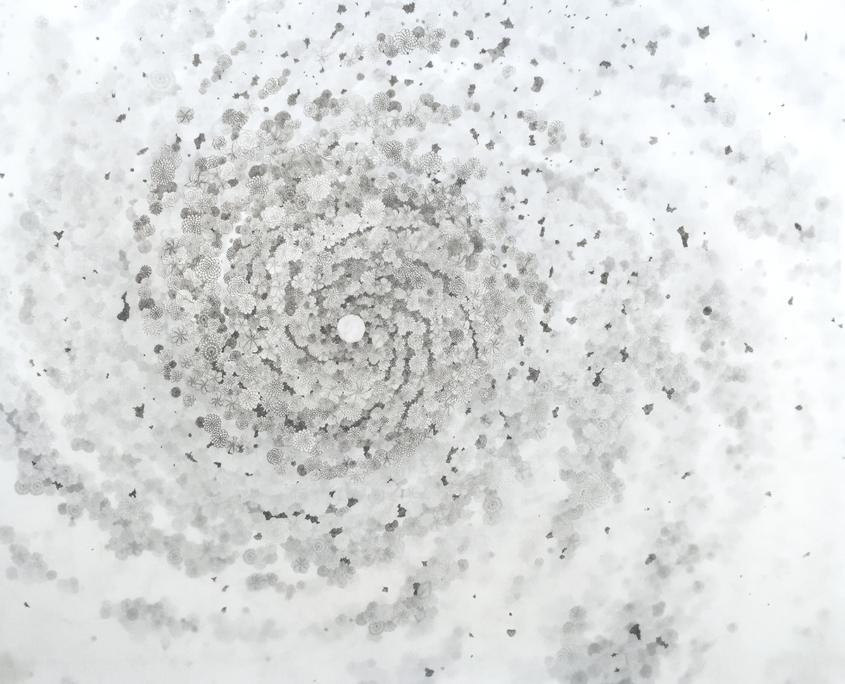Kenn Kotara, Kotara Studio, LLC
Drawing: Works on Paper
“A line is a dot that went out for a walk.” Paul Klee

Image: Figure, 1992, red chalk on paper, 25 x 19 inches. Collection the artist
Drawing on paper is a time-honored tradition of noting by hand what the mind perceives through mark-making made on an extremely receptive substrate. My contemporary and abstract art on paper and canvas is inextricably connected, in that thought processes at any given time will be worked out in an analogous manner, through different media.
I enjoy the process of drawing, erasing and rubbing and appreciate the effect this activity renders. Impressions are captured quickly; therefore, an aspect of immediacy is attained. Because the paper is infused primarily with pastel and charcoal, these works preserve a sense of light that communicates through the layers. The media has taken hold of its space.

Image: 16 Tonal Drawings, 2001-04, pastel, charcoal & pencil on paper, 24 x 24 inches each. Collection of Neiman Marcus, Houston, TX
The tonal drawings – monotone, duotone, tritone – are continuous-field compositions in that there is no particular emphasis or focal point in the art. The picture plane is imagined extending beyond its physical edges in all directions. The imposition of a curvilinear pattern is layered over an orthogonal grid to achieve an organic image. Blurred lines are achieved by rubbing the singular or multiple color compositions with a cloth and repeating until a desired effect is accomplished. This hazy, smoky effect is known as sfumato.
The tonal drawings reveal the process of looking and time. Similar to the circle as form, drawing is the most democratic art form as is readily available to all using the most modest of means. Each work on paper is unique by decisions and choices of color and composition that can be emotive, subjective, objective, and informative.

Image: Barbe espagnole 25, 2006, mixed media on paper, 42×30 inches. Collection of Paul and Lulu Hilliard University Art Museum, University of Louisiana, Lafayette, LA
Barbe espagnole is a series inspired by the iconic hanging plant in the Southeastern U.S. known as Spanish moss. The thick curvilinear strands suspended from trees are instantly recognizable, provoking personal memories of a unique history of customs, music and cuisine. Barbe espagnole represents a strong connection to an idea of a natural symbol of the South. Preserving a sense of light, Barbe espagnole may be thought of as active, dimensional reflections on the origin of form. The drawings replicate the structure and behavior of the impressive barbe espagnole in much the same way: hanging, flowing lines, constantly in motion, however subtle.

Image: cyclogenesis, 2016, pencil on mylar (5 layered sheets), 34×40 inches. Collection the artist
Nature’s fractals and number system, the fractal-based series, often infused with the Fibonacci sequence, are the origin for contemporary art works on mylar. Lending a hazy effect with a buttery surface, mylar is a polyester sheet or film used for its transparency qualities in engineering, architecture and cartography, and others.
Flowers were the initial inspiration for this work but as a continued examination of various shapes, altering the individual element such that instead of being circular, it morphed into variants as it was repeated. The repetitive shapes became metaphors for people. People naturally strive for connection to community, and simultaneously long for distinction based on our unique qualities. The individual component – a person, an organic fractal – is a cosmos in and of itself. When these units are composed – together and moving in rotation – we, like organic fractals, fashion complex universal systems.
After time spent on work other than drawing, I often return to working on paper for a period to discern what, if anything, in my creative approach has changed as a result of a monumental undertaking. At times, I have recognized subtle shifts in my work, but often this is too nuanced to know how it may unfold. This practice has reinforced my point of view that immersing fully in one’s creative process is to accept that some mystery lies just around the bend. I am fascinated by this unknown in my work, and willingly move toward it.
Kotara is a contemporary Asheville, NC artist known for inspiring exhibitions and art installations. As a mixed-media abstract artist he investigates new and analytical approaches responding to repeating patterns of life, both philosophically and visually. For more information on contemporary abstract art pieces including drawing, painting, and sculpture, contact Kotara Studio.


